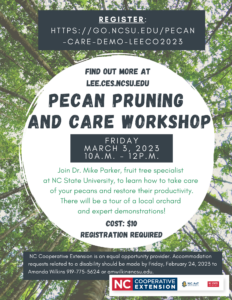
Pecan Pruning and Care Demonstration: Lee County 2023
Join Dr. Mike Parker, fruit tree specialist at NC State University, to learn how to take care of your …



El inglés es el idioma de control de esta página. En la medida en que haya algún conflicto entre la traducción al inglés y la traducción, el inglés prevalece.
Al hacer clic en el enlace de traducción se activa un servicio de traducción gratuito para convertir la página al español. Al igual que con cualquier traducción por Internet, la conversión no es sensible al contexto y puede que no traduzca el texto en su significado original. NC State Extension no garantiza la exactitud del texto traducido. Por favor, tenga en cuenta que algunas aplicaciones y/o servicios pueden no funcionar como se espera cuando se traducen.
Inglês é o idioma de controle desta página. Na medida que haja algum conflito entre o texto original em Inglês e a tradução, o Inglês prevalece.
Ao clicar no link de tradução, um serviço gratuito de tradução será ativado para converter a página para o Português. Como em qualquer tradução pela internet, a conversão não é sensivel ao contexto e pode não ocorrer a tradução para o significado orginal. O serviço de Extensão da Carolina do Norte (NC State Extension) não garante a exatidão do texto traduzido. Por favor, observe que algumas funções ou serviços podem não funcionar como esperado após a tradução.
English is the controlling language of this page. To the extent there is any conflict between the English text and the translation, English controls.
Clicking on the translation link activates a free translation service to convert the page to Spanish. As with any Internet translation, the conversion is not context-sensitive and may not translate the text to its original meaning. NC State Extension does not guarantee the accuracy of the translated text. Please note that some applications and/or services may not function as expected when translated.
Collapse ▲
Join Dr. Mike Parker, fruit tree specialist at NC State University, to learn how to take care of your …
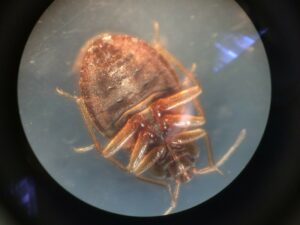
January marks the beginning of the New Year, but also the end of the major travel season that surrounds …
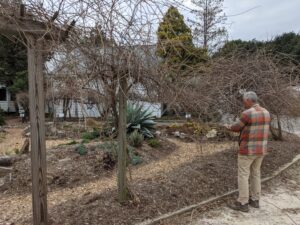
Instances of bad pruning jobs illicit violent images: crepe murder, hack job, and butchering. Maybe we know that when …
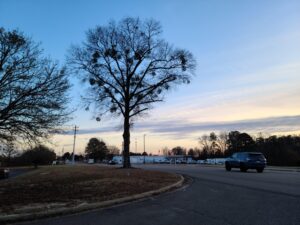
The holiday season is upon us and gathering with loved ones is one of the ways to celebrate. The …
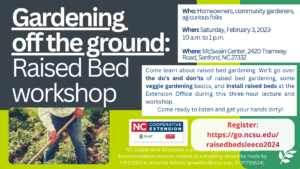
Gardening in raised beds has become very popular over the last few years. It appeals to people who have …
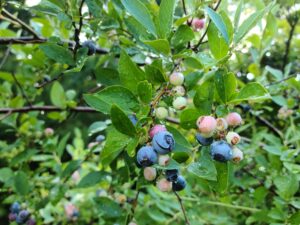
N.C. Cooperative Extension – Lee County Center is excited to partner with local homeowner Helen Spitler, who has inherited …
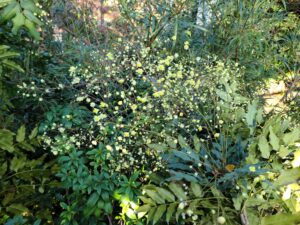
December is usually filled with articles about Christmas trees and other common festive greenery. The genus Mahonia doesn’t usually make that …

NO registration is required for this class! UPDATE: IF IT RAINS, the class will STILL happen! We will have an …
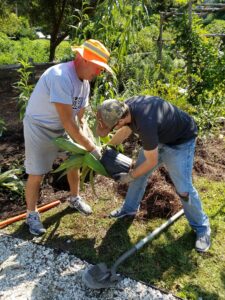
Sometimes you have a landscape project that may be just too much labor or too technical for you to …

The days are getting shorter and it is harder to get into the garden if you work a 9 …

Few things are more Southern than collard greens (a selection of Brassica oleracea Viridis group), and in North Carolina we are …
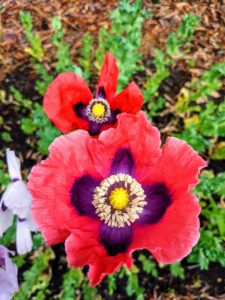
Plants have been used as symbols since the dawn of civilization, and their meaning can resonate through time and …
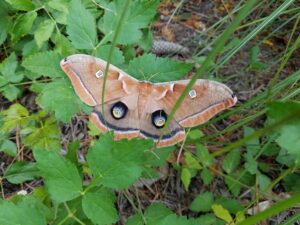
The Fall color can be hit or miss in North Carolina, but this year, we have had a beautiful …
It’s a dirty job, but someone has to do it! No, we’re not talking about taking out the trash. …
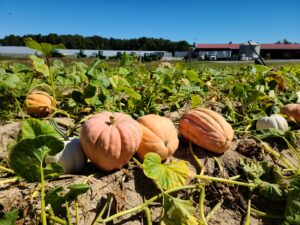
Flickering faces greet us from the darkness of porches and patios during the run up to the Halloween, or …
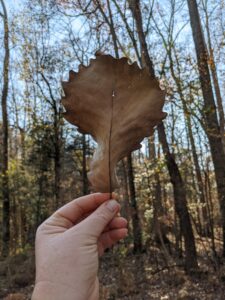
It is shaping up to be our favorite kind of fall, with temperatures already dropping in the 40s at …
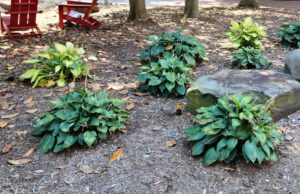
Fall is right around the corner and the morning temperatures have already started to trend downwards. That being said, …
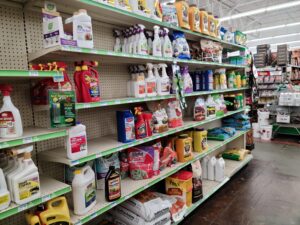
There are many differences between living in “the county” and “the city”. Depending on your preferences, some are comfort-related …
Nothing echoes fall like the vivid autumn colors of mums. Mums offer a variety of colors with minimum care. Their rich …
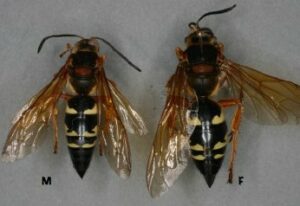
Late summer is an incredible time to see the diversity of insect pollinators that call North Carolina home. Unfortunately, …
This annual guide supplies information concerning pesticides that can be used for controlling pests in …

Downy mildew is a disease caused by fungal-like organisms that can affect a wide variety …

This publication alerts prospective gardeners to some of the most common contaminants in urban soils, …
This table presents information on postemergence herbicides registered for use on woody ornamentals.
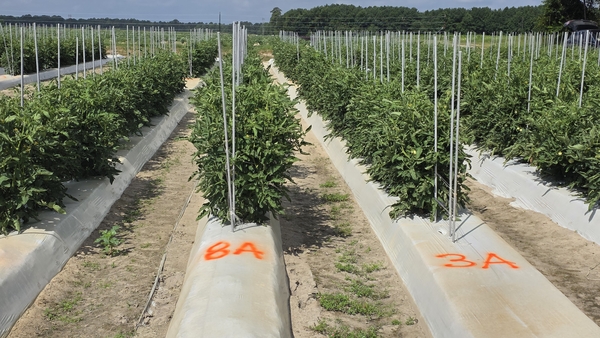
Tomato is a warm-season crop that, when managed using appropriate production practices, can reach first …
This publication focuses on the production and harvest of head lettuce, one of the most …
Onion is a cool-season crop that tolerates moderate freezing temperatures and is well adapted to …
At the national level, processing-tomato production remains concentrated in a few key regions. California continues …